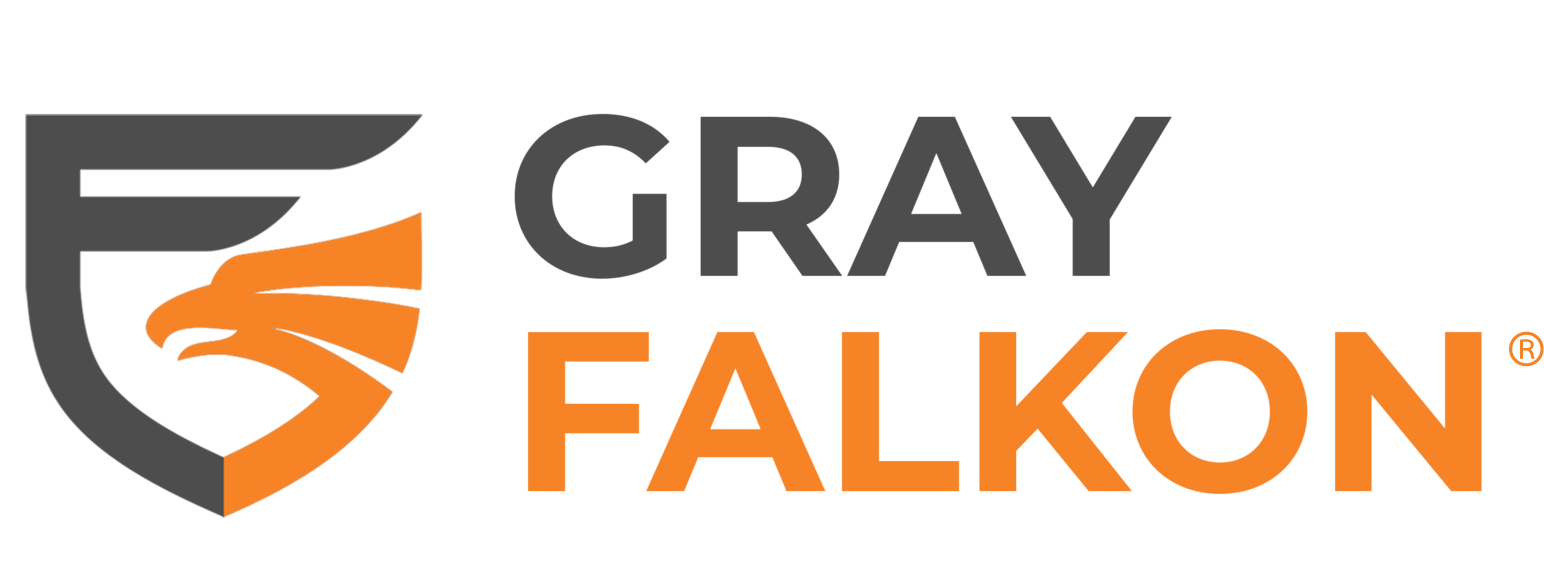
In the competitive and ever changing landscape of retail and eCommerce, understanding and implementing effective pricing strategies is crucial for the success of any brand or retailer. Among the myriad of pricing strategies, Minimum Advertised Price (MAP) and Manufacturer’s Suggested Retail Price (MSRP) stand out as two key elements that directly impact brand integrity, customer perception, and sales performance. While both concepts aim to guide pricing decisions, they serve distinct purposes and are governed by different principles and practices.
This article explores the nuances of MAP and MSRP, delving into their definitions, differences, and the strategic implications these policies hold for retailers. We will introduce how Gray Falkon’s innovative solution seamlessly supports brands in navigating the complexities of MAP, ensuring compliance, and optimizing their pricing strategies for maximum benefit.
By understanding the intricacies of MAP and MSRP, brands can better position themselves in the market, protect their brand, and foster healthy relationships with manufacturers and consumers alike.
What is MAP?
Minimum Advertised Price (MAP) is a policy enforced by manufacturers or brands upon retailers, dictating the lowest price at which a product can be advertised. It’s important to note that MAP restrictions apply solely to advertised prices and do not limit the actual selling price in-store or online. This means retailers can sell products at any price they choose, but when it comes to advertising, promotions, or public displays of pricing, they must adhere to the MAP guidelines set forth by the manufacturer.
The primary objective of a MAP policy is to maintain brand value and integrity by preventing price wars that can lead to the devaluation of products in the eyes of consumers. By setting a minimum advertised price, manufacturers ensure that their products are perceived as high-quality and valuable, thus maintaining a consistent market image and protecting the interests of all sellers in the distribution chain.
MAP policies also play a crucial role in maintaining fair competition among retailers. Without such policies, larger retailers could leverage their purchasing power to advertise and sell products at significantly lower prices, potentially driving smaller competitors out of the market. MAP levels the playing field by ensuring that all retailers adhere to the same minimum advertised price, fostering a competitive environment that is fair and beneficial for both consumers and sellers.
Enforcing MAP policies can be challenging, especially with the vastness of online retail platforms and the ease with which prices can be changed and advertised. However, the importance of MAP in preserving brand reputation and ensuring fair competition cannot be overstated.
What is MSRP?
Manufacturer’s Suggested Retail Price (MSRP) is the price that a product’s manufacturer recommends it be sold for at the point of sale. Unlike MAP, which focuses on the minimum advertised price, MSRP is concerned with the actual selling price of the product. It serves as a guideline for retailers to set their prices and helps standardize the cost of goods across different selling platforms and locations.
The MSRP is often used as a benchmark for consumers to understand the value of a product in relation to its retail price. It provides a sense of what is considered a fair price by the manufacturer, allowing customers to assess deals and discounts more effectively. While retailers are not legally obliged to follow MSRP, doing so can help maintain a harmonious relationship with manufacturers and ensure consistency in how a product is valued across the market.
One key difference between MSRP and MAP is their impact on pricing flexibility. MSRP gives retailers a suggested selling price but does not restrict them from setting their own prices, whether higher or lower. This flexibility is crucial for retailers to manage their pricing strategies in response to market demands, competition, and inventory levels. On the other hand, MAP strictly regulates the advertised price, ensuring that no retailer can advertise a product below the set minimum, regardless of the actual selling price.
The strategic implications of MSRP for retailers involve balancing manufacturer expectations with market conditions. Adhering to MSRP can enhance brand loyalty and customer trust by ensuring price consistency. However, retailers must also be adept at navigating market dynamics to optimize their pricing strategies, sometimes choosing to sell below MSRP to attract customers or clear out inventory, provided they comply with any existing MAP policies.
Strategic Implications of MAP and MSRP for Retailers
The strategic implications of MAP (Minimum Advertised Price) and MSRP (Manufacturer’s Suggested Retail Price) policies for retailers extend beyond mere compliance. Understanding and effectively implementing these policies can significantly influence a retailer’s market positioning, brand relationships, and customer loyalty.
Market Positioning: Retailers that adhere to MAP and MSRP guidelines can enhance their market positioning by promoting fair competition. By preventing price wars, MAP policies help maintain product value and brand integrity across all retail channels. This level of consistency ensures that small and large retailers can compete on aspects other than price, such as customer service, product knowledge, and shopping experience.
Brand Relationships: Compliance with MAP and MSRP policies strengthens relationships between retailers and manufacturers. Manufacturers are likely to view compliant retailers as partners who value brand integrity and are committed to maintaining product value. This trust can lead to better cooperation, exclusive deals, and access to limited-edition products or early releases, providing compliant retailers with a competitive edge.
Customer Loyalty: Retailers that follow MAP and MSRP guidelines contribute to a consistent market price for products, which can enhance customer trust and loyalty. When customers see that a retailer consistently offers fair pricing, as suggested by the manufacturer, it builds confidence in the retailer’s pricing strategy. This perception of fairness and transparency can turn occasional shoppers into loyal customers.
Pricing Flexibility: While MAP policies restrict advertised prices, they do not limit the final sale price. Retailers can use this to their advantage by offering discounts at the point of sale, through loyalty programs, or during private sales. This strategy allows retailers to attract price-sensitive customers without violating MAP policies or undermining the product’s perceived value.
Integrating Gray Falkon’s automated compliance monitoring and enforcement solution can significantly aid retailers in navigating the complexities of MAP on eCommerce platforms like Amazon and Walmart.com. By automating the detection and enforcement of pricing policy violations, brands can focus more on their sales strategies and customer engagement rather than constantly monitoring unauthorized third-party sellers. This approach not only ensures compliance but also provides a competitive advantage by maintaining brand integrity and product value across the market.
Our Solution: Supporting MAP and MSRP for Retail Success
Gray Falkon offers a comprehensive solution to the challenges retailers face with MAP (Minimum Advertised Price) compliance and enforcement. By leveraging advanced AI and automation, Gray Falkon provides brands with the tools necessary to monitor, detect, and help them enforce pricing policies across a wide range of online sales channels.
Automated Monitoring and Detection: Gray Falkon’s technology automates the monitoring of marketplaces for MAP violations. This continuous surveillance ensures that all instances of non-compliance are identified promptly.
Proactive Enforcement: Upon detection of a pricing policy violation, Gray Falkon facilitates the a brand’s enforcement strategy. Our solution can automatically generate and send out compliance notifications to violators, detailing the specific infraction and the necessary steps to rectify the issue. This proactive approach significantly reduces the manual effort required by brands, streamlining the compliance management process.
Data-Driven Insights: Beyond enforcement, Gray Falkon provides valuable insights into pricing trends and compliance. By analyzing data collected from monitoring activities, brands can gain a deeper understanding of the market dynamics, including common compliance issues and the effectiveness of their pricing policies. These insights can inform strategic decisions regarding pricing strategies and policy adjustments.
The implementation of a Minimum Advertised Price (MAP) policy is not designed to constrain or discourage authorized sellers. Instead, these policies are strategically developed to foster an environment of healthy competition among retailers while ensuring that brand integrity is maintained across all sales channels. The impact of these policies extends beyond the realm of authorized sellers, significantly affecting unauthorized third-party sellers. Unauthorized sellers often engage in practices that undermine MAP and MSRP guidelines, selling products at significantly lower prices to gain a competitive edge. This not only disrupts the market equilibrium but also poses a direct threat to the brand’s perceived value and the profitability of authorized sellers.
Our approach to addressing MAP challenges is comprehensive, targeting the root causes of non-compliance and unauthorized selling. By leveraging advanced AI and automation technologies, we provide brands with the tools to help them enforce MAP effectively and protect their market position. This includes identifying and addressing violations by unauthorized sellers, helping compliant, authorized sellers benefit from the brand’s pricing strategies.
Implementing Gray Falkon’s solution not only simplifies the task of MAP policy enforcement but also strengthens brand positions in the marketplace. By ensuring pricing policy compliance, retailers can foster a competitive yet fair environment that benefits both consumers and the industry as a whole.
Work With Us
Understanding the nuances of MAP and MSRP is critical for retailers navigating the competitive and complex landscape of eCommerce. While both pricing strategies are designed to maintain brand value and ensure fair competition, their differences highlight the unique roles they play in retail pricing and brand strategy. MAP policies safeguard the bottom line for retailers and maintain brand integrity by preventing price wars, whereas MSRP helps standardize retail prices, ensuring consumers have a consistent pricing experience across platforms.
In online marketplaces where unauthorized sellers and pricing policy violations are prevalent, the enforcement of these policies becomes a top priority.
This is where Gray Falkon’s innovative solution comes into play, offering a robust mechanism for brands to monitor compliance, help them enforce their pricing policies, and protect their products from being devalued by unauthorized sellers. By leveraging AI and automation, Gray Falkon helps brands maintain their pricing integrity and foster an environment of healthy competition, ultimately benefiting both the brands and their authorized sellers.
Take the first step towards safeguarding your brand. Contact Us today to learn how we can tailor our solutions to meet your unique needs and help you maintain control over your online sales.




